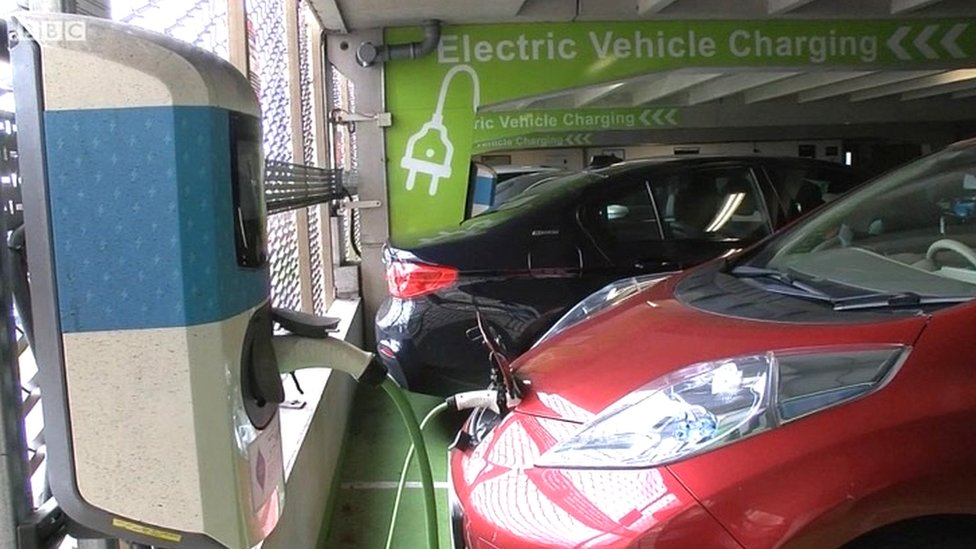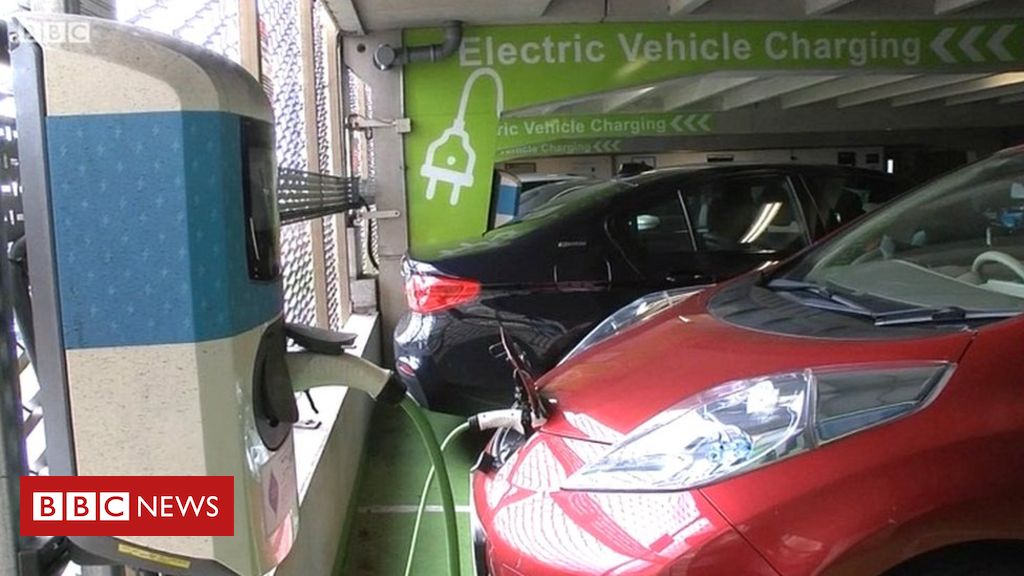By Justin Rowlatt
Chief environment correspondent

The announcement that the UK is to ban the sale of new petrol and diesel cars from 2030, a full decade earlier than planned, has prompted hundreds of questions from anxious drivers. I’m going to try to answer some of the main ones we’ve had sent in to the BBC.
How do you charge an electric car at home?
The obvious answer is that you plug it into the mains but, unfortunately, it isn’t always that simple.
If you have a driveway and can park your car beside your house, then you can just plug it straight into your domestic mains electricity supply.
The problem is this is slow. It will take many hours to fully charge an empty battery, depending of course on how big the battery is. Expect it to take a minimum of eight to 14 hours, but if you’ve got a big car you could be waiting more than 24 hours.
A faster option is to get a home fast-charging point installed. The government will pay up to 75% of the cost of installation (to a maximum of £500), though installation often costs around £1,000.
A fast charger should typically take between four and 12 hours to fully charge a battery, again depending how big it is.
Ban on new petrol and diesel cars in UK from 2030
How much will it cost to charge my car at home?
This is where electric vehicles really show cost advantages over petrol and diesel. It is significantly cheaper to charge an electric car than fill up a fuel tank.
The cost will depend on what car you’ve got. Those with small batteries – and therefore short ranges – will be much cheaper than those with big batteries that can travel for hundreds of kilometres without recharging.
How much it will cost will also depend on what electricity tariff you are on. Most manufacturers recommend you switch to an Economy 7 tariff, which means you pay much less for electricity during the night – when most of us would want to charge our cars.
The consumer organisation Which estimates the average driver will use between £450 and £750 a year of additional electricity charging an electric car.
What if you don’t have a drive?
If you can find a parking space on the street outside your home you can run a cable out to it but you should make sure you cover the wires so people don’t trip over them.
Once again, you have the choice of using the mains or installing a home fast-charging point.
What about public charging points?
Many local authorities are putting in street charging points. Look out for lamp posts with a blue light on them. These will have plugs where you can get power.
Lots of new electric cars now have apps installed that will direct you to the nearest charging point. If not, there are a host of websites and downloadable apps that will do the job.
There are already more than 30,000 charging stations in the UK, according to the electricity company EDF. This means there are already more public places to charge than petrol stations. Around 10,000 new charge points were added just in 2019.
And you should expect that number to increase rapidly. Today, the government announced a £1.3bn investment in electric vehicle infrastructure, including charging points across the country.
Public charging points are pretty easy to use, but there are a number of different operators and you often have to be a member to use them.
Some charge a flat fee each month for access; some offer pay-as-you-go charging.
Typically, you’ll need to use a swipecard or your mobile phone to unlock the charging point. This will allow you to connect the charging cable from your car to the charging point.
A few manufacturers, most notably Tesla, offer access to “superchargers”. These allow very rapid charging indeed, you might get an 80% charge in just 30 minutes – about the time it takes to go to the loo and buy and drink a cup of coffee.
These used to be free to Tesla owners, but now most have to pay to use the Supercharger network.
image copyrightReuters
How far can an electric car go?
As you might expect, this depends on which car you choose. The rule of thumb is the more you spend, the further you’ll go.
The range you get depends on how you drive your car. If you drive fast, you’ll get far fewer kilometres than listed below. Careful drivers should be able to squeeze even more kilometres out of their vehicles.
These are some approximate ranges for different electric cars.
- Renault Zoe – 544km (338 miles)
- Hyundai IONIQ – 310km (193 miles)
- Nissan Leaf e+ – 384km (239 miles)
- Kia e Niro – 453km (281 miles)
- BMW i3 120Ah – 293km (182 miles)
- Tesla Model 3 SR+ – 409km (254 miles)
- Tesla Model 3 LR – 560km (348 miles)
- Jaguar I-Pace – 470km (292 miles)
- Honda e – 201km (125 miles)
- Vauxhall Corsa e- 336km (209 miles)
It is worth noting that electric vehicle range is expected to steadily increase as battery technology improves.
How long does the battery last?
Once again, this depends on how you look after it.
Most electric car batteries are lithium-based, just like the battery in your mobile phone. Like your phone battery, the one in your car will degrade over time. What that means is it won’t hold the charge for so long and the range will reduce.
If you overcharge the battery or try to charge it at the wrong voltage it will degrade more quickly.
Check out whether the manufacturer offers a warranty on the battery – many do. They typically last eight to 10 years.
It’s worth understanding how they work, because you won’t be able to buy a new petrol or diesel car after 2030.
Related Topics
-
Electric cars
- Environment
- Pollution
- Green economy
- Batteries
- Car Technology
















